On the Road is a weekday feature spotlighting reader photo submissions.
From the exotic to the familiar, whether you’re traveling or in your own backyard, we would love to see the world through your eyes.
Albatrossity
This is the last set in this series, as fall is slowly giving way to winter here in flyover country, with migration slowing down and winter residents settling in. To me much of the joy in fall migration is the return of our winter hawks, a diverse mix of Red-tailed Hawk subspecies, falcons, and the occasional Rough-legged Hawk. I have yet to see the latter this season, but here are some pics of some of the others, as well as a winter-resident sparrow or two.
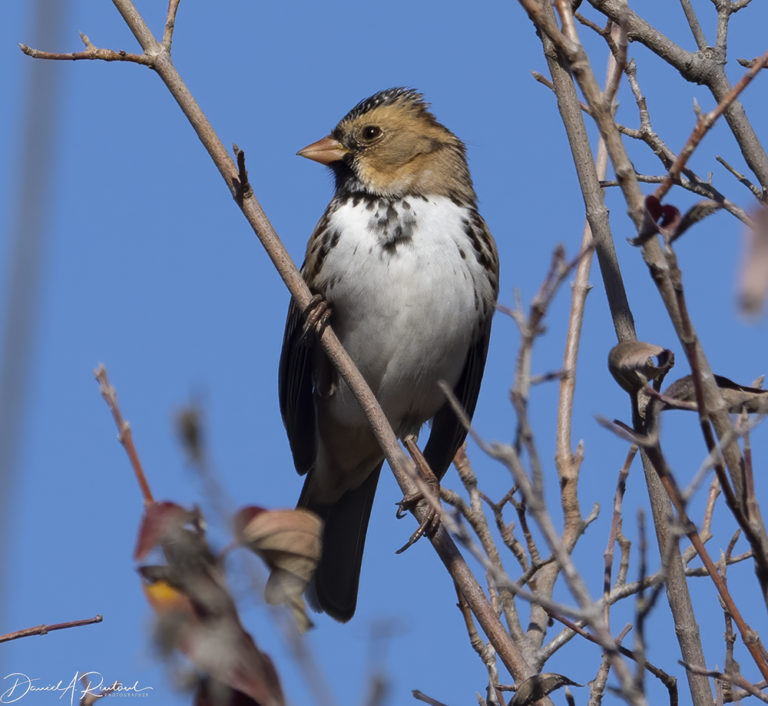
Harris’s Sparrows are abundant and vocal specialty birds of this part of the country. They nest in virtually inaccessible parts of Canada, and they are one of the last passerine species in North America to have their nest and eggs described. When they appear irregularly outside of the Great Plains they are rare enough to attract crowds of birders, but here they are an expected and welcome part of the winter bird scene.
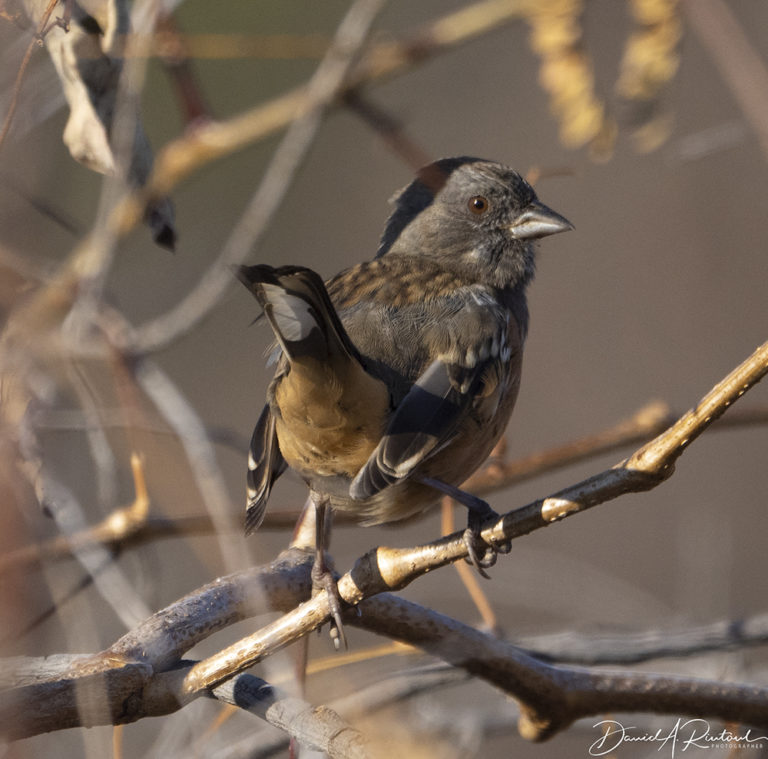
Another winter resident, and one that seems particularly abundant this fall, is the Spotted Towhee. This species ranges widely across the west, but it is likely that our winter birds come mostly from the northern plains of the Dakotas, Wyoming and Montana. Starting in late September these birds slowly replace our summer-resident Eastern Towhees, and they will leave in April just as those more southern residents return to my patch of flyover country.

Following those sparrows south are birds like this Merlin, whose ability to grab sparrow-sized meals is critical for its winter survival here. This is a female of the Taiga subspecies; the paler prairie subspecies also can be found here in winter. And now that we know that the closest relatives to falcons are the parrots, when I look at this picture it’s hard to overlook that parrot resemblance!
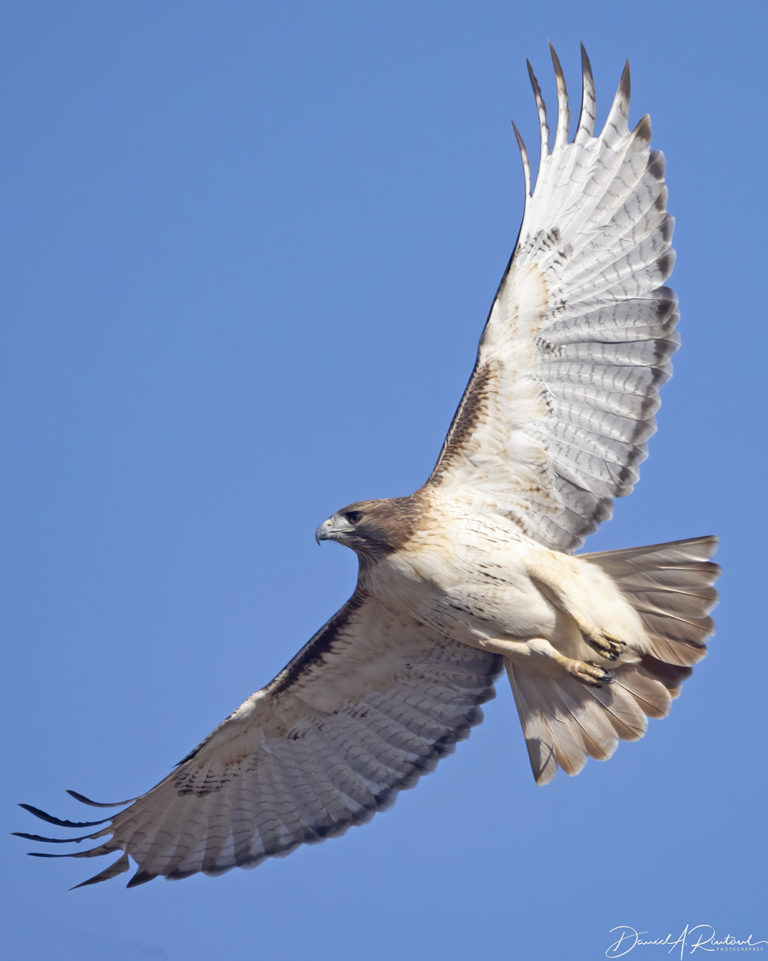
Red-tailed Hawks are a species that really intrigues me, since their plumage variation seems almost infinite. The next few images should help make that point. This one is fairly typical of the birds who stick around here for the summer breeding season; all of those are members of the eastern (borealis) subspecies. Note how pale it is underneath, but with a dark head and a pronounced dark bar extending from the shoulder to the “wrist” (the so-called patagial mark). This is a classic adult light-morph eastern Red-tailed Hawk of the paler races that we see on the plains.
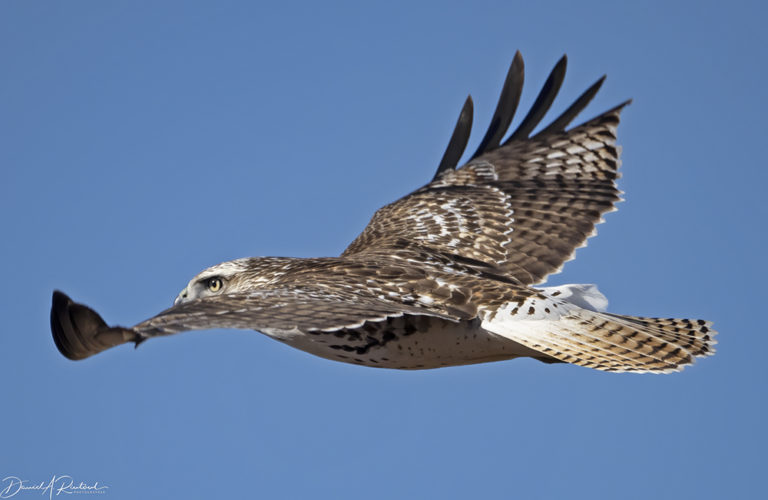
Young Red-tailed Hawks are distinguished by a light yellow iris and a well-banded tail that may be (but usually is not) red. Here is a light-morph youngster that probably hatched out around here someplace, but maybe not. Most young Red-tailed Hawks are difficult to identify down to subspecies.
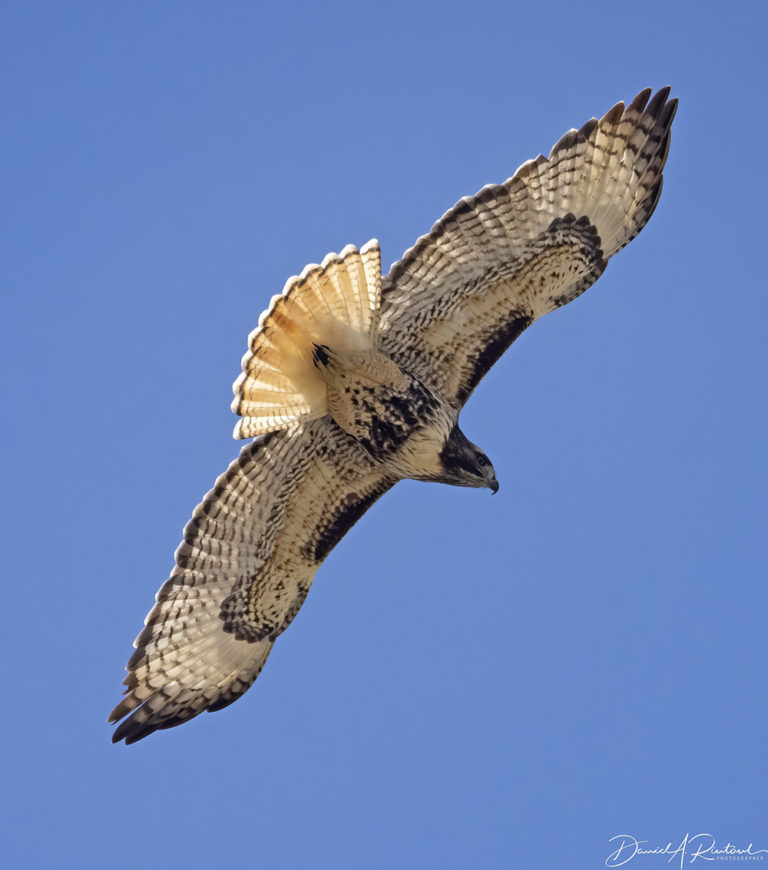
This adult bird would also be classified as a light-morph, but is obviously a much darker bird. Lots of pigment on the underwings, a very deep and dark patagial mark, and a wide, dark, and blobby band across the belly of the bird mark this one as a member of the northern (abieticola) subspecies. This bird migrated to Kansas from the boreal forests of Canada, most likely. In the winter here this is a very common sight.
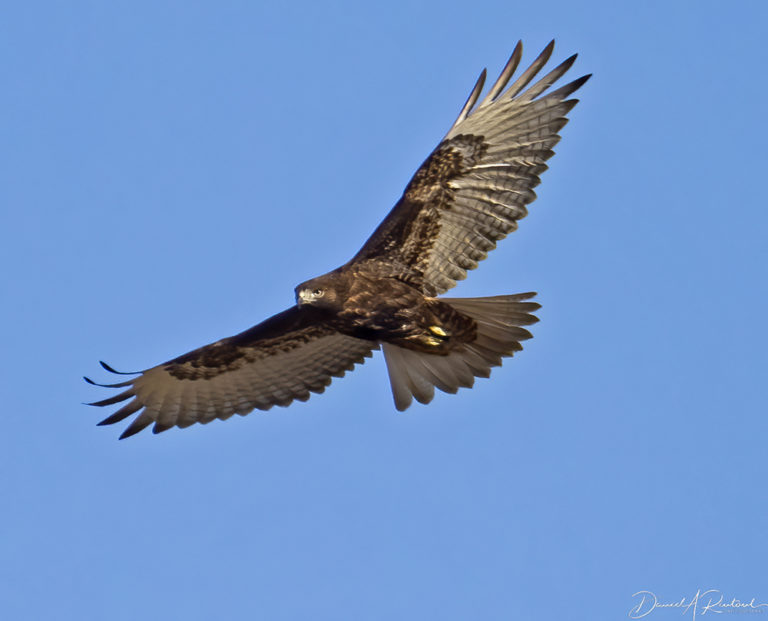
Dark-morph Red-tailed Hawks come in many flavors as well. Here’s a young bird of the western (calurus) subspecies. If you squint you can still see a darker belly band and a darker patagial mark, but the overall plumage above and below is dark brown or rufous. The location of the breeding sites for this sort of dark-morph bird that winters on the Great Plains is currently a matter of some dispute, but work is ongoing to try to test some of the hypotheses that folks have come up with.
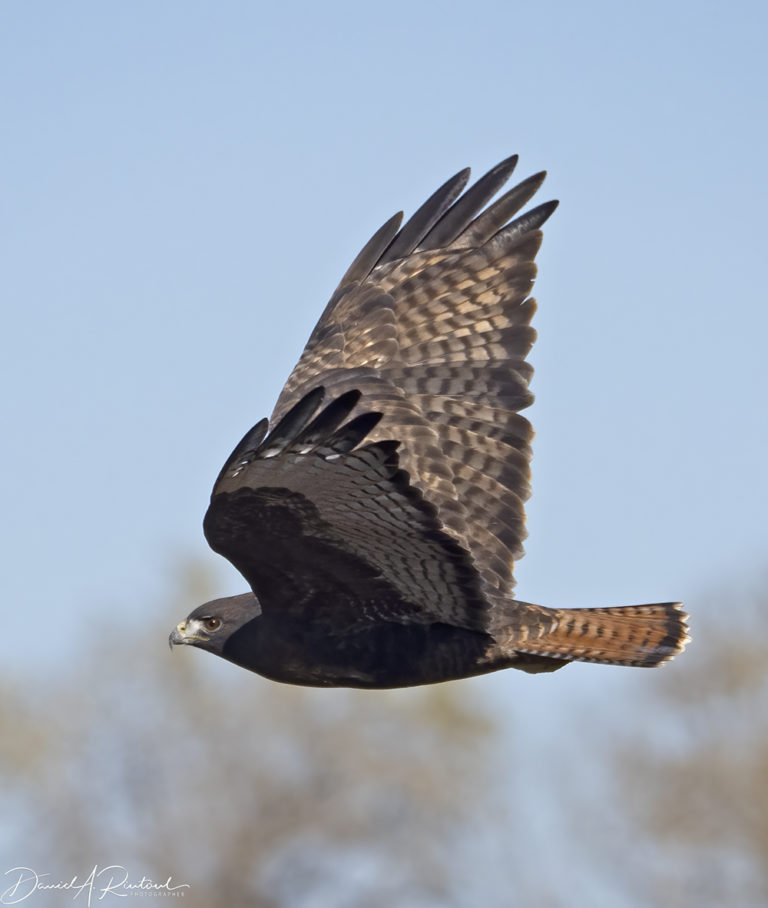
Here is an adult of the dark-morph western subspecies, with a gorgeous banded red tail and a nearly coal-back head and back. There are a few of these birds that have regularly wintered in my area, and most of them are back this season, but this one was new to me, and I sure hope it sticks around!
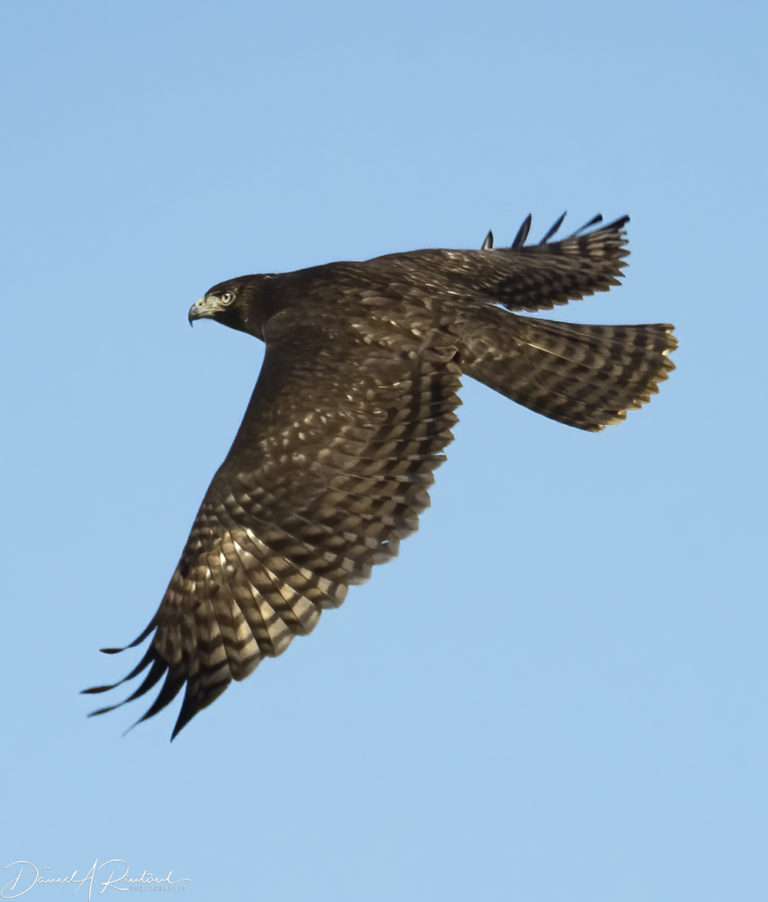
The classic dark-morph bird, of course is the Harlan’s Hawk. I am fortunate to have several regular birds of this type in my area, and most of them are back this season as well. But this is a new one, a youngster in his first winter on the planet, and I really hope he makes it through the winter, the migration north, a summer in Alaska or the Yukon, and then back here again.
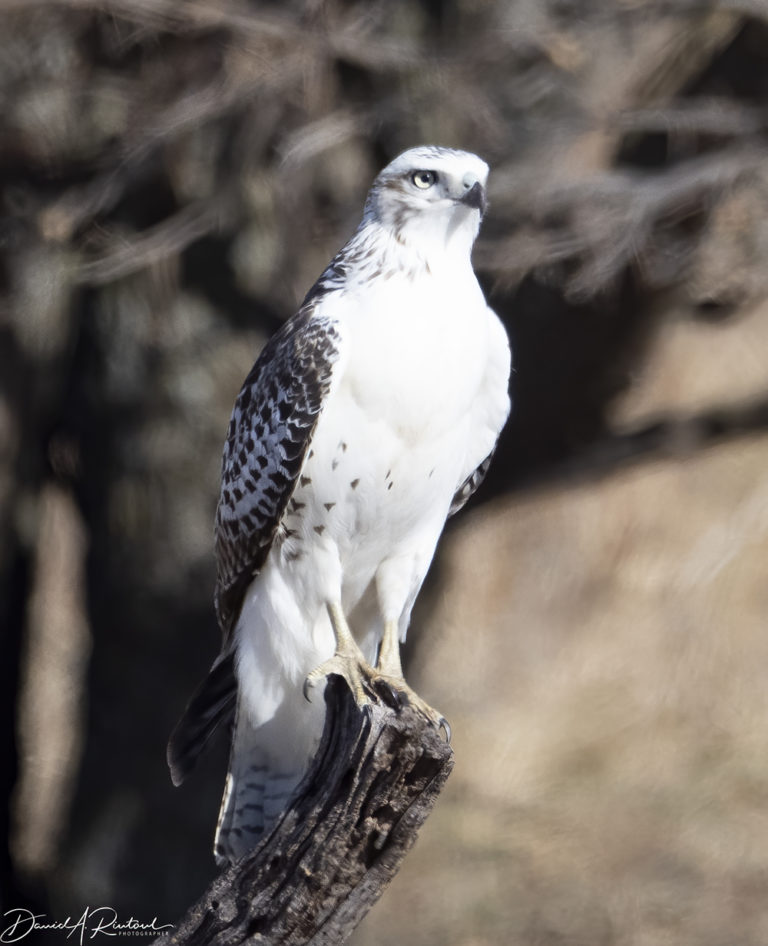
Finally, a surprise. This very light bird is not a member of the eastern or western subspecies, but is actually a light-morph Harlan’s Hawk. Birds that look like this might be a member of the other very pale subspecies, the Krider’s Hawk, but this one can be IDed as a Harlan’s Hawk by the use of some field marks that do not appear in this portrait. We assume that these birds breed in Alaska and the Yukon just like the dark-morph Harlan’s Hawks. Again, I hope this bird makes it through its first winter here in the south, migrates successfully back home, and returns to Kansas for many winters to come.

Mary G
This made me think of you, Albatrossity. I do love to see the full wingspread from below.
JPL
Wonderful pictures.
@Mary G: Thanks for the link, and what an amazing picture.
Rob
Those hawk photos are wonderful.
There have been several Harris’s Sparrows over the past three decades near and even in Washington DC, and each one of them has attracted crowds of birders, as Albatrossity says in his caption. That is such a handome species.
There go two miscreants
Really great in-flight pictures! That Merlin on the post does look like a parrot, except for the color. I did not know that about the relationship between hawks and parrots. (Also, that post is just begging for the rest of the face to be carved in below.)
Albatrossity
@Mary G: That is indeed a once-in-a-lifetime shot! Thanks!
Mathguy
Thanks for all of the red tail photos. When I’m out riding, I usually see several large hawks, and have often wondered what kind they were. I thought they were all different, but it looks like they’re all red tails!
Albatrossity
@Mathguy: When I first started noticing hawks, I was told by our resident ornithologist “Everything is a redtail”, Not quite true, but at least 95% true around here in the winter. Summer time is a different story, and we now have Red-shouldered and Broad-winged Hawks here in the breeding season. But the default hawk ID is still gonna be redtail!
Elizabelle
@Mary G: Beautiful photo. So perfect, almost looks composed, as at a desk. All the cool elements.
karensky
Redtails and sparrows are the major winter birds in my neighborhood in Philly. Love them both.
MelissaM
You do get some lovely pictures! I love the first red-tail hawk one, where the “fingers” are fully furled in flight! You can practically see how the feathers are working for the bird.
And thanks for the lesson re. IDing redtail hawks. Now I know that a good guess in IL in winter is redtail. Saw one over the weekend hunting a squirrel and managed to get pretty close.
JanieM
That first one immediately sets a tone: as if it’s turning its head to present its best side for a portrait.
As usual, they’re all amazing, but what struck me most this time is the pictures of the birds in flight. You just know that in real life they’d be soaring, swooping, turning, always in motion — and somehow the motion is both hidden and present in these pictures.
stinger
Damn, I love your pictures.
J R in WV
Great pictures, the discussion of the markings is almost as fascinating. I will never learn those detailed field marks, but I sure enjoy watching and living with the birds. I should walk in our woods more with the camera armed and ready. We have multiple hawks and owls around the place, I see them while driving in and out.
I can’t get the “shot of a lifetime” photo to load on twit… bummer!
BigJimSlade
The Harris’s Sparrow looks like it’s ignoring you, on purpose.
The Spotted Towhee look like it might be saying something pithy.
The Merlin looks like it’s sitting on a sculpture of an owl.
And the rest of the shots are just awesome!
KSinMA
Beautiful.
WaterGirl
@Mary G: That won’t load for me in any browser. Sounds like a lovely image. :-(
Albatrossity
@WaterGirl: That’s interesting; it won’t load for me now either. Wonder what happened to it! Perhaps a copyright violation?
JanieM
@Albatrossity: It wouldn’t load for me as of about 9 a.m. eastern time. I just figured it was some glitch and went off to eat my breakfast, then forgot to check back later. Twitter tells me there was an error loading the image, and to retry — sometimes that works, but not today.